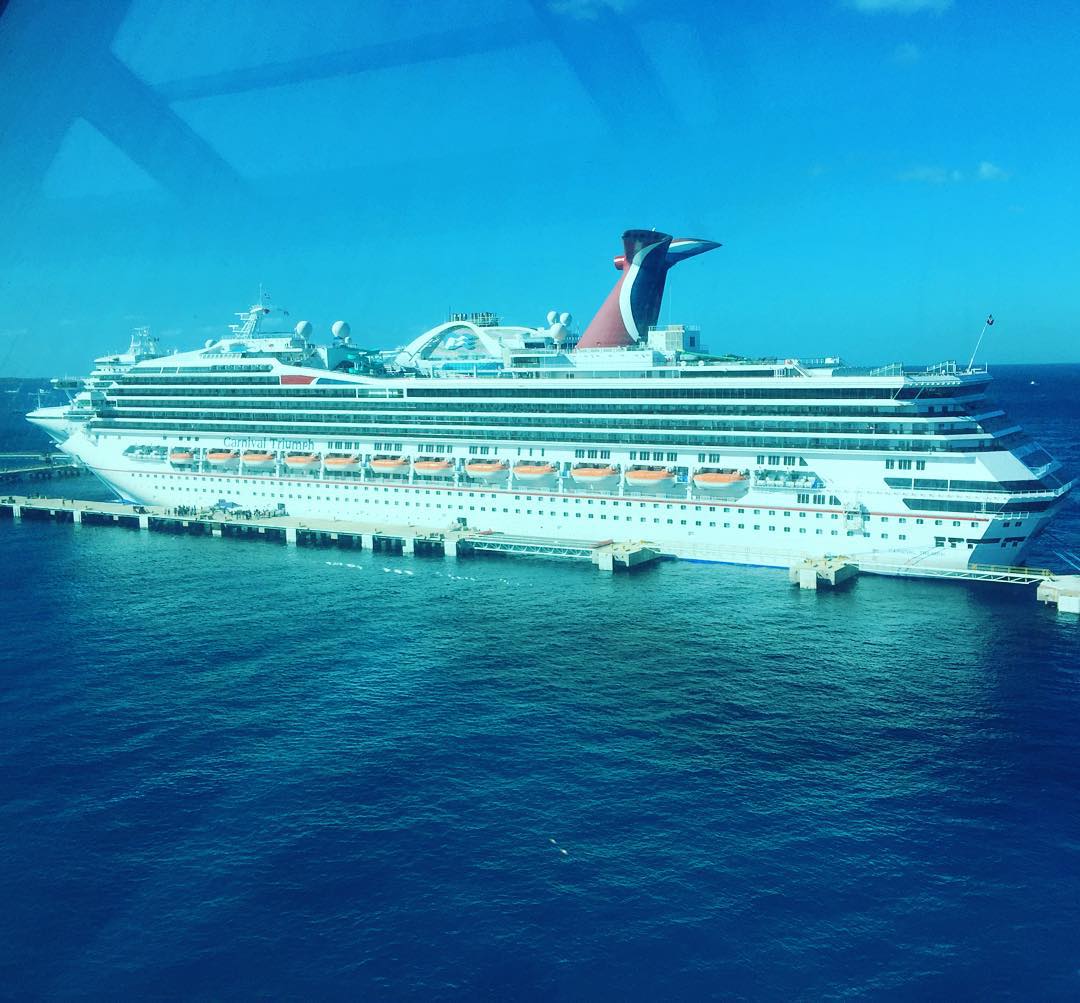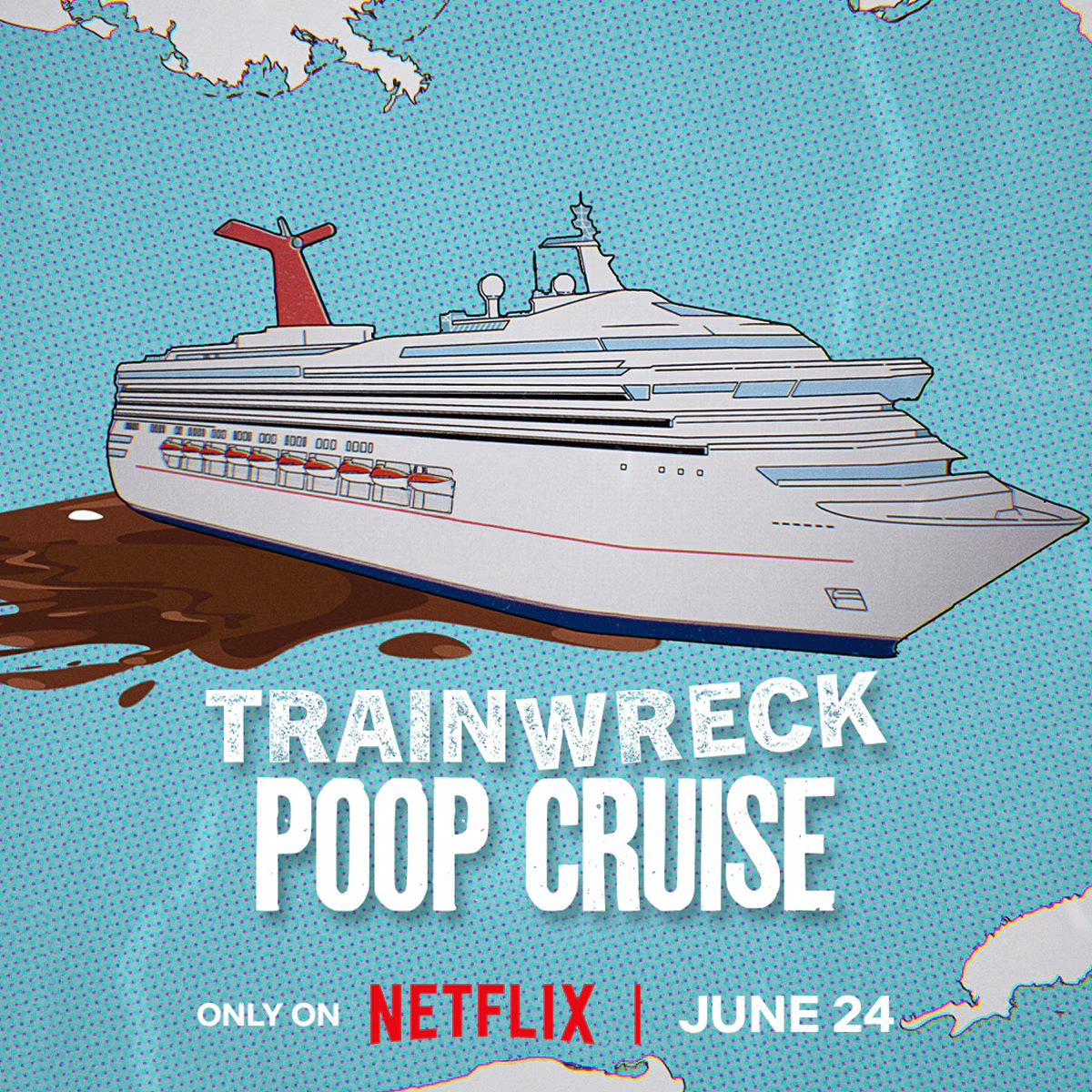By now, you’ve probably heard of, watched, or tried to avoid watching the Netflix sensationalized “documentary” about the infamous “poop cruise” onboard one of Carnival Cruise Line’s ships, the Carnival Triumph. I remember being glued to CNN and social media watching the event play out in real time and wondering what I would do if I just happened to be on that cruise! Now, more than a decade later, during a time when Carnival is fending off a brutal firestorm from loyal cruisers about upcoming changes to their loyalty program, the “poop cruise” floats to the surface, making one wonder just how much Advil the execs in Miami are popping to dull the pain.
I haven’t been a Netflix subscriber since they stopped mailing out DVDs, but I forked over the $7.99 a month and signed up just to see how much my aging memory aligned with how the “poop cruise” gets portrayed on the small screen.
The Carnival Triumph: A Ship’s History and Its Infamous Incident
The Carnival Triumph, later renamed Carnival Sunrise, was, and still is, a part of Carnival’s fleet. Built by Fincantieri in Italy and launched on October 23, 1999, it embarked on its maiden voyage that same day, offering cruises mainly from U.S. ports like Galveston, Texas. The ship operated without a major incident for over a decade, but its reputation would suddenly be changed forever.
On February 10, 2013, at 5:30 a.m. CST, a fire broke out in the ship’s aft engine room during a four-day cruise from Galveston to Cozumel, Mexico. The fire, caused by a fuel leak from the No. 6 diesel engine igniting on a hot surface, was extinguished automatically, but it crippled the ship’s power and propulsion systems. This left the Carnival Triumph stranded in the Gulf of Mexico with 4,229 passengers and crew members. Without electricity, essential systems failed quickly: air conditioning stopped, lighting dimmed, and, most infamously, toilets stopped working, causing raw sewage to back up into passenger areas. The resulting health hazard earned the incident its crude but memorable nickname.

Passengers faced unimaginable conditions for nearly five days. They dragged mattresses to the deck to escape stifling heat inside the ship, relied on limited food supplies after perishables spoiled and had to be discarded, and used red biohazard bags (who knew a ship stocked that many of them) when nature called due to the lack of flushing toilets.
The crew worked tirelessly to maintain order, distribute resources, and manage the crisis. The ship was initially set to be towed to Progreso, Mexico, but strong currents pushed it too far north. The decision was then made to tow the ship to Mobile, Alabama, but it would not arrive until February 14, 2013, after a tow line broke, further dragging out the ordeal.
The incident wasn’t the first sign of trouble for the Triumph. On January 28, 2013, propulsion issues delayed its return to Galveston, forcing the cancellation of a Cozumel stop. Additionally, this was the fourth engine room fire on a Carnival-owned ship, following similar incidents on the Tropicale (1999), Carnival Splendor (2010), and Costa Allegra (2012). These recurring issues pointed to problems within Carnival’s fleet.
Investigation Findings: A Preventable Disaster
The investigation, led by the Bahamas Maritime Authority with support from the U.S. Coast Guard and the National Transportation Safety Board, revealed that the fire was entirely preventable. The February 18, 2013, report identified a leak in the flexible fuel oil return line of the No. 6 diesel engine as the cause, with fuel spilling onto a hot surface and igniting.
Maintenance records showed the No. 6 generator was overdue for servicing by over a year, and Carnival had documented nine similar fuel leak incidents across its fleet in the prior two years. A January 28, 2013, Port State Control inspection in Texas City, Texas, had also flagged a short in a high-voltage connection box, which remained unresolved at the time of the fire, with a compliance deadline of February 27, 2013.
These findings exposed lapses in Carnival’s maintenance practices. The company faced plenty of legal and public backlash, ultimately reimbursing passengers for their trips and onboard purchases, offering free future cruises, and investing $300 million in fleet-wide safety upgrades, including fire prevention and suppression systems. The Triumph itself underwent $115 million in repairs and cleanup but failed its first post-incident inspection. It was later refurbished for $200 million and relaunched as Carnival Sunrise in 2019.
Carnival Triumph to Undergo $200M Refurb and Emerge as Carnival Sunrise
Why Did Netflix Choose to Revisit the “Poop Cruise?”
Netflix’s Trainwreck: Poop Cruise, released on June 24, 2025, is part of the Trainwreck series, which explores sensational disasters and missteps, such as the Woodstock ’99 riots and the Astroworld festival tragedy. The “poop cruise” just happened to be a perfect fit for this series due to its blend of human drama, corporate negligence, and the absurd, which not only had me, but millions back in 2013, glued to social media, the news, and even Saturday Night Live, who poked fun at Carnival.
Revisiting the “poop cruise” over 12 years later shows that it still has a bit of pop culture relevance. After all, we love a good telling of how humans react under the most stressful and strange circumstances, while corporate execs try to spin the narrative to avoid accountability. After watching some other episodes in Netflix’s Trainwreck series in order to get the most out of my $7.99, I found that the show absolutely lives for stories like these, and like reality television, they’re relatively inexpensive to produce and attract viewers by playing on the spectacle and absurdity of the events they feature.
The documentary had 21.1 million views in its first week!

Humor in the Face of a Harrowing Ordeal
One of the things that hit me the most about Trainwreck: Poop Cruise is its tone. The documentary leans heavily on humor, emphasizing the absurdity of passengers navigating dark hallways with flashlights, using sanitary bags for waste, and coping with dwindling food supplies. However, this comedic approach feels “off” when considering the real suffering endured by those on board.
Imagine being on a vessel, stuck in stifling heat, with limited food, and the stench of sewage, while crew members worked under extreme pressure to maintain order. The humor, while it made for great viewing, risks trivializing an experience that was, for many, traumatic. The documentary’s lighthearted tone panders to those seeking entertainment, but completely dismisses those who lived through the ordeal.
The Crew Were Part of this Too, But What About Them?
The documentary leans heavily into passenger experiences, featuring firsthand accounts from individuals—one guy who documented his search for a working bathroom, while another recalled the frustration of seeing another cruise ship, the Carnival Legend, drop off food supplies but not rescue them. These stories dominate the narrative at the expense of the crew’s perspective.
The crew, numbering around 1,200, faced the very same unsanitary conditions and stifling heat while having to manage passenger unrest, clean up the absolute mess onboard, and work around the clock to maintain the ship’s basic operations in the worst imaginable conditions. One crew member is shown standing in sewage-flooded quarters, yet their struggles, particularly those of engineers and maintenance staff working “deep in the bowels of the ship,” are overlooked.
This creates a very one-sided narrative. The crew working in hazardous conditions to keep the ship afloat receives minimal attention. A more balanced approach, including interviews with engineers or other below-deck staff, could have highlighted the human cost across all on board.
Trainwreck: Poop Cruise – A Missed Opportunity
Trainwreck: Poop Cruise is a sensationalized retelling of a memorable disaster.
Plain and simple.
Its comedic tone and focus on passenger stories make it entertaining, but what about the real suffering endured by those on board? It overlooks the crew’s critical role and hardships, particularly those working in the ship’s most challenging areas. The omission of a deeper dive into Carnival’s failures leading up to the event also makes it fall short.
A more balanced approach—giving equal weight to crew and passenger experiences and emphasizing the seriousness of the ordeal—would have created a more respectful documentary. It misses an opportunity to tell real human stories and the lessons the entire cruise industry learned from the Carnival Triumph disaster.
Overall, it was worth the $7.99, but my subscription won’t be renewed.
